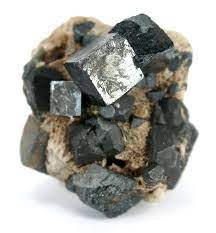Perovskites: New Process To Fabricate

Scientists have recently created a new process to fabricate large perovskite devices that could create the next generation of solar cells.
- A perovskite is a material that has the same crystal structure as the mineral calcium titanium oxide (CaTiO3), the first-discovered perovskite crystal.
- The mineral was discovered in the Ural Mountains of Russia by Gustav Rose in 1839 and is named after Russian mineralogist Lev Perovski.
- Generally, perovskite compounds have a chemical formula ABX3, where ‘A’ and ‘B’ represent cations, and X is an anion that bonds to both.
- A large number of different elements can be combined together to form perovskite
- Due to its compositional flexibility, scientists can design perovskite crystals to have a wide variety of physical, optical, and electrical characteristics from insulating, semiconducting, metallic, and superconducting characteristics.
- They have applications in various fields of optoelectronics, including photovoltaic solar cells, photodetectors, light-emitting devices, etc.
- Solar cells are currently the most prominent perovskite application, as synthetic perovskites are recognized as potential inexpensive base materials for high-efficiency commercial photovoltaics.




